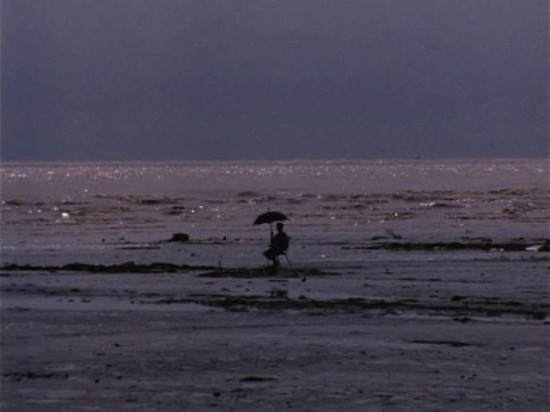
This is a soundless story of the building of ‘Toledo Spirit’, the container ship, its sailing and eventual beaching. Insignificant men crawl on cranes and gantries to build it and other men, sans the equipment, scrape it after beaching.
“As a kid, I read a lot of Maritime books, Jack London, people like that, big adventures. Subsequently I read more of the classic stuff. There’s so much great literature about the sea. Visually, it’s fascinating because it’s without any parameters. It’s not the world that we know. It’s almost like traveling into outer space. I always thought that was perspective was great, particularly as someone who used to be a painter. It exposes you to this different atmosphere. You experience things that feel really unique. Even though there’s the tradition of Maritime painting. If you think of someone like Turner, his whole life was spent doing seascapes, paintings about ships and naval battles and nature referencing this incredible atmosphere. When you work on ships, it’s a job so you get locked into it. But there’s a lot of downtime. You’re able to space out and look at the atmosphere of the sea. That in itself is amazing. The sense of time is really different because you’re traveling so slow. Sometimes on ships you’re dead in the water. They shut them down and work on the engine or something like that and you’re just out there floating. In the middle of nowhere.”
Peter Hutton1
“At Sea tells the story (‘the birth, life and death’, in the director’s words) of a container ship – but there are no words to adequately describe the film’s awesome visual expedition. Peter Hutton knows the sea. His experiences as a former merchant seaman have informed his filmmaking practice, known for its rigor and epic beauty. At Sea begins in South Korea with diminutive workers shipbuilding. The colossal vessel is revealed in De Chirico-worthy proportions, its magnitude surreal to the human eye. Off to sea, the splendour and intensity of the water – set against the vibrant colours of the containers – causes us to see the world anew. The film concludes in Bangladesh amidst shipbreakers as enthralled by Hutton’s camera as we are by his images. ”
Andrea Picard
“At Sea begins at a shipyard in South Korea. Fully embracing his newfound color scheme, Hutton gives us a sharp, Constructivist photographic primer. Shot by shot, we move from the long distance of entire ocean liners being loaded with metal cargo boxes, all the way in to close-up images of the hull, the engine, and the crane that lifts a piece of iron into place for welding. By the end of the first part, Hutton provides integrated views of the whole port-crane upon crane, ship after ship. In a sense, the first 20 minutes of At Sea offer an introduction not only to the rest of the film (which finds us aboard another freighter), but Hutton’s maritime filmography as a whole. After the voyage, Hutton provides a quite unexpected coda. On a shore in Southeast Asia, we see the rusted-out hull of a decommissioned vessel. This time, we are watching in silence as local scrappers take the ship apart for whatever meager pittance they can earn. At Sea, then, displays ‘shipping’ within its life cycle, but does so without facts or judgment. The shots form a limited narration regarding a capitalist process, while also providing enough space between the shots for less deterministic rumination.”
Michael Sicinski
“One of the great revelations of traveling by sea is how slow it is compared to airplane or even train travel. You can actually go backwards in time on a ship, you can sail into a storm and make no headway... One of the exhilarating and terrifying aspects of traveling by sea is the vulnerability you feel and the fact that you’re not isolated from nature, but are rather in the heart of nature itself... I was up on the bow of the ship late at night, probably around three in the morning. It was completely dark: the sky was clouded up so there were no stars or moon to illuminate anything. All of a sudden I felt the temperature change... It was like going into an inkwell, and I had this revelation that there were all these declensions of darkness that I hadn’t been aware of. Pretty soon it started to rain and the seas kicked up rather dramatically and the mate on the bridge shined a light down and told me to come up. As I was turning around, a big wave dipped over the bow. It could have washed me over. I scurried up to the bridge and continued to observe the storm from up there... Being on the ship forced me to slow down, and allowed me to take time to look.”
Peter Hutton2
- 1Mike Plante, “Peter Hutton,” Cinemad.
- 2Scott MacDonald, A Critical Cinema 3: Interviews with Independent Filmmakers (Berkeley: University of California Press, 1998), 252.

